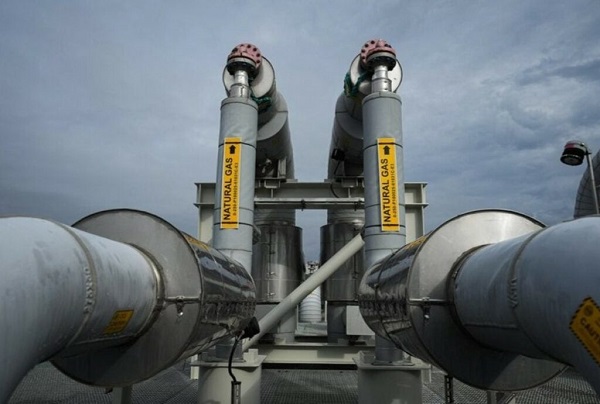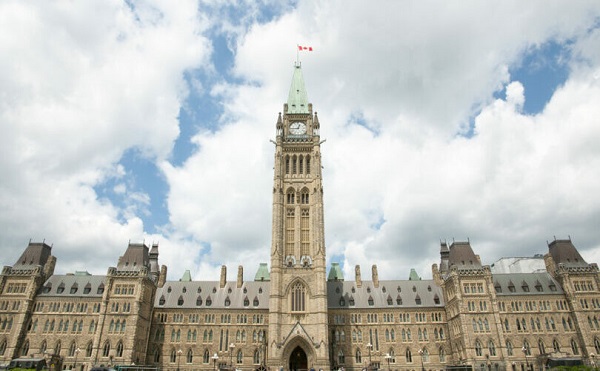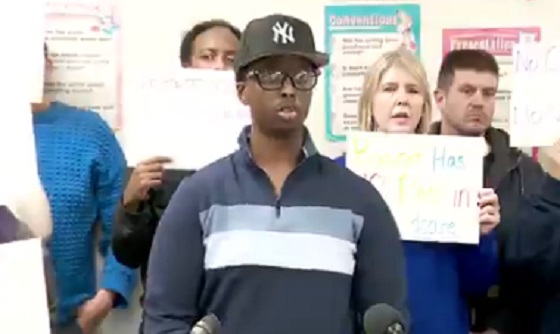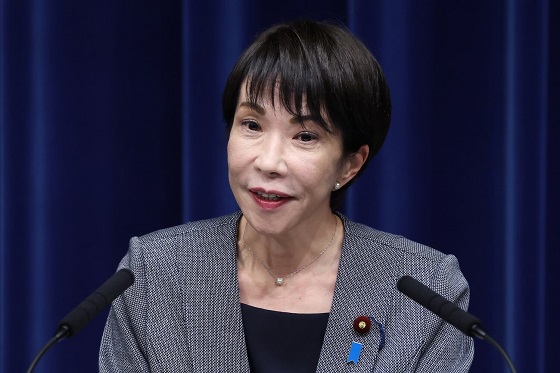Business
It’s Time for Canadians to Challenge the American Domination of the LNG Space

From EnergyNow.Ca
By Susan McArthur
Canada is now among the top 10 countries with natural gas reserves. It’s time to take advantage of that
Canadians are starting to understand the Americans ate our breakfast, lunch and dinner when it comes to selling liquefied natural gas (LNG) on the global market while simultaneously undermining our national security.
They are finally waking up to the importance of the urgent request by oil and gas CEOs to all federal party leaders calling for the removal of legislation and regulation impeding and capping the development of our resources.
The LNG story in the United States is one of unprecedented growth, according to a recent Atlantic Council report by Daniel Yergin and Madeline Jowdy. Ten years ago, the U.S. did not export a single tonne of LNG. Today, U.S. exports account for 25 per cent of the global market and have contributed US$400 billion to its gross domestic product (GDP) over the past decade.
The U.S. is now the world’s largest LNG supplier, edging out Qatar and Australia, and according to Yergin and Jowdy, its export market is on track to contribute US$1.3 trillion to U.S. GDP by 2040 and create an average of 500,000 jobs annually.
Last week, Alberta announced a sixfold increase in its proven natural gas reserves to 130 trillion cubic feet (tcf). The new figures push Canada into the top 10 countries with natural gas reserves.
Unfortunately, notwithstanding this vast resource, Canada didn’t even make it to the LNG party and the Americans have been laughing all the way to the bank at Canada’s expense. Our decade-long anti-pipeline and natural resource agenda has cost us dearly and Donald Trump’s trade tariffs are a stake to the heart.
As the world grapples with global warming, natural gas is the perfect transition fuel. It generates half the CO2 emissions of coal, provides needed grid backup for intermittent renewable wind and solar power, and it is relatively easy to commission.
Canada has extensive natural gas reserves, but these reserves are less valuable if we can’t get them to offshore markets where countries will pay a premium for energy generation. Canadian gas is abundant, but, given our smaller market, typically trades at a discount to U.S. gas and a massive discount to European and Asian markets.
The capital-intensive nature of LNG facilities requires long-term supply contracts. Generally, 20-year supply contracts with creditworthy counterparties are required to secure the financing required to build gas infrastructure and liquefaction plants.
For example, as part of a larger strategic deal, Houston-based LNG company NextDecade Corp. signed a 20-year offtake agreement to supply 5.4 million tonnes per annum (mtpa) to French multinational TotalEnergies SE.
As the market grows and matures, the spot market is gaining share, but term contracts continue to represent most of the market. This is a problem for Canada as it tries to break into the market, as much of current and future demand is already committed.
More than half the current LNG market demand, or 225 mtpa, is under contract until 2040, according to Shell PLC’s LNG outlook report for 2024. A further 100 mtpa is contracted to 2045. Shell recently revised its LNG market growth forecast upward to 700 mtpa by 2040 and it estimates the LNG supply currently in operation or under construction already accounts for about 525 mtpa, or almost 75 per cent of the estimated market in 2040.
Even if Canada secured 100 per cent of the available market share (impossible), this represents a fraction of the 130 trillion cubic feet of reserves in Alberta and an infinitesimal amount of Canada’s natural gas reserve.
If Canada wants to sell its LNG to the global market, it needs to be at the starting line now. Canada has seven LNG export projects in various stages of development. They are all in British Columbia. The capacity of these export plants is 50 mtpa and the capital cost is estimated to be $110 billion.
After significant delays and cost overruns, our first export facility, LNG Canada’s 14 mtpa Phase 1 in Kitimat, is set to ship its first cargo to Asia later this year. Phase 2, representing a further 14 mtpa, is still awaiting a final investment decision. The Cedar LNG, Ksi Lisims LNG and Woodfibre LNG projects are licensed, at various stages of development and represent a further 17 mtpa.
Canada’s LNG exports today are a drop in the bucket compared to both our potential and the 88 mtpa exported by the U.S. in 2024. We have one project completed and, if history repeats itself and Canada doesn’t get its act together, the runway for the remaining licensed projects will be long, painful and costly.
Financing large capital projects requires predictability with respect to timing and cost. This is also a problem for Canada. As the oil and gas CEOs have pointed out, LNG market players have lost trust in Canada as an investible jurisdiction for these projects.
In the face of Trump’s trade war, Canadians have become pipeline evangelists. Wishful thinking and political talking points won’t be enough if we repeat our decade of own goals on this file. We have literally left billions on the table.
Governments should fast-track all licensed projects, limit special interest distractions and provide the required muscle and financial support to get these projects up and running as soon as possible.
From Churchill, Man., to Quebec to the Maritimes to British Columbia, we should be making plans for LNG terminals and the required pipeline infrastructure to get this valuable and clean resource to market. And Canadians should pray we haven’t totally missed the market.
Susan McArthur is a former venture capital investor, investment banker and current corporate director. She has previously served on a chemical logistics and oil service board.
Business
The great policy challenge for governments in Canada in 2026

From the Fraser Institute
According to a recent study, living standards in Canada have declined over the past five years. And the country’s economic growth has been “ugly.” Crucially, all 10 provinces are experiencing this economic stagnation—there are no exceptions to Canada’s “ugly” growth record. In 2026, reversing this trend should be the top priority for the Carney government and provincial governments across the country.
Indeed, demographic and economic data across the country tell a remarkably similar story over the past five years. While there has been some overall economic growth in almost every province, in many cases provincial populations, fuelled by record-high levels of immigration, have grown almost as quickly. Although the total amount of economic production and income has increased from coast to coast, there are more people to divide that income between. Therefore, after we account for inflation and population growth, the data show Canadians are not better off than they were before.
Let’s dive into the numbers (adjusted for inflation) for each province. In British Columbia, the economy has grown by 13.7 per cent over the past five years but the population has grown by 11.0 per cent, which means the vast majority of the increase in the size of the economy is likely due to population growth—not improvements in productivity or living standards. In fact, per-person GDP, a key indicator of living standards, averaged only 0.5 per cent per year over the last five years, which is a miserable result by historic standards.
A similar story holds in other provinces. Prince Edward Island, Nova Scotia, Quebec and Saskatchewan all experienced some economic growth over the past five years but their populations grew at almost exactly the same rate. As a result, living standards have barely budged. In the remaining provinces (Newfoundland and Labrador, New Brunswick, Ontario, Manitoba and Alberta), population growth has outstripped economic growth, which means that even though the economy grew, living standards actually declined.
This coast-to-coast stagnation of living standards is unique in Canadian history. Historically, there’s usually variation in economic performance across the country—when one region struggles, better performance elsewhere helps drive national economic growth. For example, in the early 2010s while the Ontario and Quebec economies recovered slowly from the 2008/09 recession, Alberta and other resource-rich provinces experienced much stronger growth. Over the past five years, however, there has not been a “good news” story anywhere in the country when it comes to per-person economic growth and living standards.
In reality, Canada’s recent record-high levels of immigration and population growth have helped mask the country’s economic weakness. With more people to buy and sell goods and services, the overall economy is growing but living standards have barely budged. To craft policies to help raise living standards for Canadian families, policymakers in Ottawa and every provincial capital should remove regulatory barriers, reduce taxes and responsibly manage government finances. This is the great policy challenge for governments across the country in 2026 and beyond.
Business
How convenient: Minnesota day care reports break-in, records gone

A Minneapolis day care run by Somali immigrants is claiming that a mysterious break-in wiped out its most sensitive records, even as police say officers were never told that anything was actually stolen — a discrepancy that’s drawing sharp attention amid Minnesota’s spiraling child care fraud scandal.
According to the center’s manager, Nasrulah Mohamed, someone forced their way into Nakomis Day Care Center earlier this week by entering through a rear kitchen area, damaging a wall and accessing the office. Mohamed told reporters the intruder made off with “important documentation,” including children’s enrollment records, employee files, and checkbooks tied to the facility’s operations.
But a preliminary report from the Minneapolis Police Department tells a different story. Police say no loss was reported to officers at the time of the call. While the department confirmed the center later contacted police with additional information, an updated report was not immediately available.
Video released by the day care purporting to show damage from the incident depicts a hole punched through drywall inside what appears to be a utility closet, with stacks of cinder blocks visible just behind the wall — imagery that has only fueled skepticism as investigators continue to unravel what authorities have described as one of the largest fraud schemes ever tied to Minnesota’s human services programs.
Mohamed blamed the alleged break-in on fallout from a viral investigation by YouTuber Nick Shirley, who recently toured nearly a dozen Minnesota day care sites while questioning whether they were legitimately operating. Shirley’s video has racked up more than 110 million views. Mohamed insisted the coverage unfairly targeted Somali operators and said his center has since received what he described as hateful and threatening messages.
A manager at the Nokomis Daycare Center in Minneapolis detailed "extensive vandalism" at the facility during a Wednesday news conference.
Manager Nasrulah Mohamed reported that the suspect stole important employee and client documents, an incident he attributed to YouTuber Nick… pic.twitter.com/71nNTSXdTT
— FOX 9 (@FOX9) December 31, 2025
“This is devastating news, and we don’t know why this is targeting our Somali community,” Mohamed said, calling Shirley’s reporting false. Nakomis Day Care Center was not among the facilities featured in the video.
The break-in claim surfaced as law enforcement and federal officials continue to expose a massive fraud network centered in Minneapolis, involving food assistance, housing, and child care payments. Authorities say at least $1 billion has already been identified as fraudulent, with federal prosecutors warning the total could climb as high as $9 billion. Ninety-two people have been charged so far, 80 of them Somali immigrants.
Late Tuesday, the U.S. Department of Health and Human Services announced it was freezing all federal child care payments to Minnesota unless the state can prove the funds are being used lawfully. The payments totaled roughly $185 million in 2025 alone.
Minnesota Gov. Tim Walz, under intensifying scrutiny for allowing fraud to metastasize for years, responded by attacking the Trump administration rather than addressing the substance of the findings. “This is Trump’s long game,” Walz wrote on X Tuesday night, claiming the administration was politicizing fraud enforcement to defund programs — despite federal officials pointing to documented abuse and ongoing criminal cases.
Meanwhile, questions continue to swirl around facilities already flagged by investigators. Reporters visiting several sites highlighted in Shirley’s video found at least one — Quality “Learing” Center — operating with children inside despite state officials previously saying it had been shut down. The Minnesota Department of Children, Youth, and Families later issued a confusing clarification, saying the center initially reported it would close but later claimed it would remain open.
As Minnesota scrambles to respond to the funding freeze and mounting arrests, the conflicting accounts surrounding the Nakomis Day Care incident underscore a broader problem confronting state leaders: a system so riddled with gaps and contradictions that even basic facts — like whether records were actually stolen — are now in dispute, while taxpayers are left holding the bill.
-

 Business8 hours ago
Business8 hours agoHow convenient: Minnesota day care reports break-in, records gone
-

 Business1 day ago
Business1 day agoThe Real Reason Canada’s Health Care System Is Failing
-

 International8 hours ago
International8 hours agoTrump confirms first American land strike against Venezuelan narco networks
-

 Opinion1 day ago
Opinion1 day agoGlobally, 2025 had one of the lowest annual death rates from extreme weather in history
-

 Business1 day ago
Business1 day agoFederal funds FROZEN after massive fraud uncovered: Trump cuts off Minnesota child care money
-

 Business8 hours ago
Business8 hours agoThe great policy challenge for governments in Canada in 2026
-

 Addictions1 day ago
Addictions1 day agoCoffee, Nicotine, and the Politics of Acceptable Addiction
-

 Business1 day ago
Business1 day agoDark clouds loom over Canada’s economy in 2026






